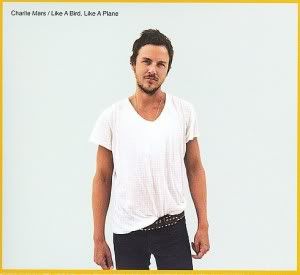When rumors surfaced that Maurice Sendak’s 1963 picture book, Where The Wild Things Are, was slated for the big screen, I (like someother people) wondered: How do you stretch a ten-minute bedtime story into a two-hour movie?
Robert Zemeckis confronted that question in 2004, with his adaptation of The Polar Express, another children’s story famed for its sparse sentences and Caldecott-winning illustrations. He fattened the narrative with show tunes, adventure subplots, innovative CGI, and new characters, mostly voiced by Tom Hanks, and the result was a family film that mimicked the book in appearance but diverged from it thematically.

Spike Jonze and his co-writer, the multi-talented Dave Eggers, add to and complicate the Wild Things story in startlingly different ways. For one, there are no A-list actors’ names printed in gilded yellow letters above the movie’s title. I don’t mean to say the actors aren’t A-list material:James Gandolfini, Chris Cooper, Forrest Whittaker and Catherine O'Hara are hardly unknowns. But if you don't recognize their voices during the movie, you’ll have to lift your feet for the popcorn-sweepers and scrutinize the credits for the actors’ names. And contrary to typical Hollywood fashion, child actor Max Records is rightfully credited first.
A second difference is the soundtrack. No, Max and the monsters don’t break into song and dance. If this were an auteur-less Disney movie, you know it would feature an I-Just-Can’t-Wait-To-Be-King-style number when Max demands the “wild rumpus” commence. Jonze hands the musical reins over to undervalued composer Carter Burwell and Karen O. The music, which exists on a plane somewhere between catchy and harrowing, may be one of the reasons Stephanie Zacharek over at Salon.com characterizes the film as an exercise in “shoe-gazing”.
But actors and soundtrack aside, let’s talk about the narrative. How do Jonze and Eggers thicken Sendak’s ten-sentence book into a hundred minutes of filmstrip?
Easy. They furnish Max with an Oedipus complex.

Freud’s argument, in ten words or less, was this: Boys lust after their mothers and want their fathers dead. Wild thing he may be, but at the outset of the movie, Max’s relationship with his mother (Catherine Keener) is exactly his ideal: Max has no father to compete with (we’re left to assume from odd shots of the father’s possessions that he is dead). And his mother dotes on him--even when she should be working.
Consider the movie’s first crisis, the snowball battle Max picks with his sister’s numerous boyfriends, which ends with Max in tears and buried in snow, while his treacherous sister drives off unconcerned in a car full of older penises boys. In a fury, Max accuses her of betrayal and abandonment. His mother calms him, reassuring him that if she had been there, she would have stood by his side.
But then Max's mother does abandon him. She invites over another penis her boyfriend (Mark Ruffalo), and she cuddles up with him and a glass of wine on the couch, ignoring Max's demands that she come upstairs, into his bedroom, and crawl with him into his tent. The psychological links from tent to bed, and from bed to sexual intimacy, are easily drawn. When Max's mother refuses his sexual advances in preference for her boyfriend, so to speak, he storms into the kitchen, picks a loud fight with her over frozen corn that he knows will embarrass her in front of the boyfriend, and then yells that he will eat her up.
It's at this point that Max thunders out of the house, like an enraged lover, and after a few days (real or imagined) on a discovered sailboat, he comes upon the island of the Wild Things. There he demonstrates his supreme manliness and is not only accepted by, but made king of, the gendered but sexually ambivalent Wild Things. (Why does Max's main advocate, the one voiced by James Gandolfini, have the androgynous name "Carol"?) For more about Max's interactions with the Wild Things, I direct you to another reviewer.
I prefer to fast-forward to the point where Max's dominion over the monsters begins to wane. Dissatisfied about Max's performance as king, Carol reasserts his leadership over the clan and transforms from a friend into a figure of competing masculinity. He chases Max across the forest, presumably to eat him up, in an obvious counterpoint to the boy's own agitated departure from his mother's house.
Again, as after the snowball fight, Max looks for refuge in his mother. However, because his mother is far away in the world of humans, Max finds protection and comfort in a surrogate, the female Wild Thing who splits her attentions between Carol and Max (as Max's mother splits her attentions between the boyfriend and Max). She literally swallows Max to obscure him from the wrathful violent Carol, and for the first time since his arrival amongst the Wild Things, Max feels sheltered and safe. He is precisely where he has longed to be this whole time, back inside his mother's womb -- and it is a profoundly disturbing vision, boy child covered in bile inside a woman's stomach.
When Max returns home he finds, to his delight, that his mother is waiting up for him, and the competing penis boyfriend has disappeared. She serves him chocolate cake, and as he scarfs it down she closes her eyes, in pleasure and in exhaustion, like a woman sinking sleepily into her pillow beside her lover.
In perplexing weirdness, Being John Malkovich and Adaptation are hard to surpass. Yet in Where The Wild Things Are Spike Jonze may have accomplished just that.

